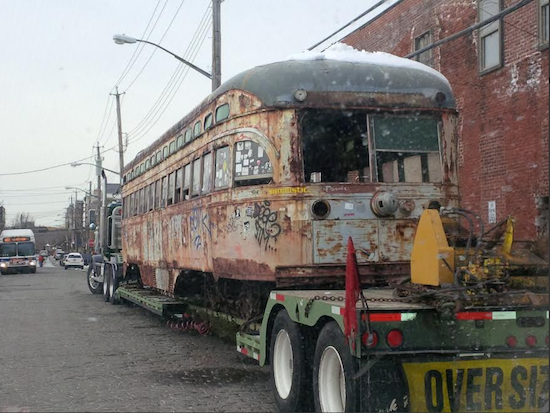Next stop for Red Hook trolleys could be scrap heap
Transit buff’s plan was felled by city bureaucracy

Screen Shot 2014-02-12 at 1.44.22 PM.png
The three deteriorating, rusting “PCC”-model streetcars that were trucked away from the Red Hook waterfront on Sunday are now the property of the Shore Line Trolley Museum in East Haven, Conn., the premiere trolley museum in the United States.
Although this may seem like good news, the museum has no plans to rehabilitate them. Indeed, if it doesn’t get a buyer for them by the end of the spring, it plans to scrap them and use them for parts.
